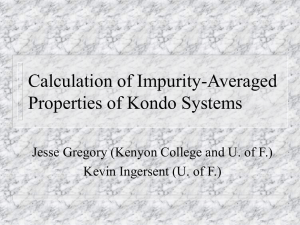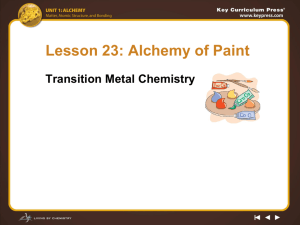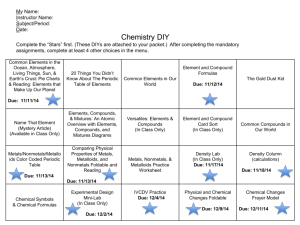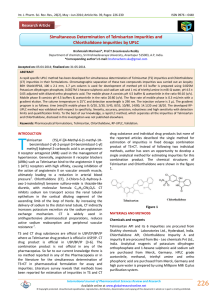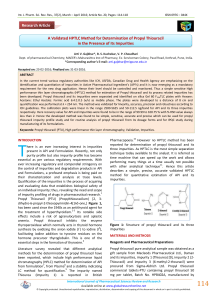REACTIONAL ELECTROLYSIS EFFECTIVE METHOD FOR PURIFICATION OF METALS
advertisement
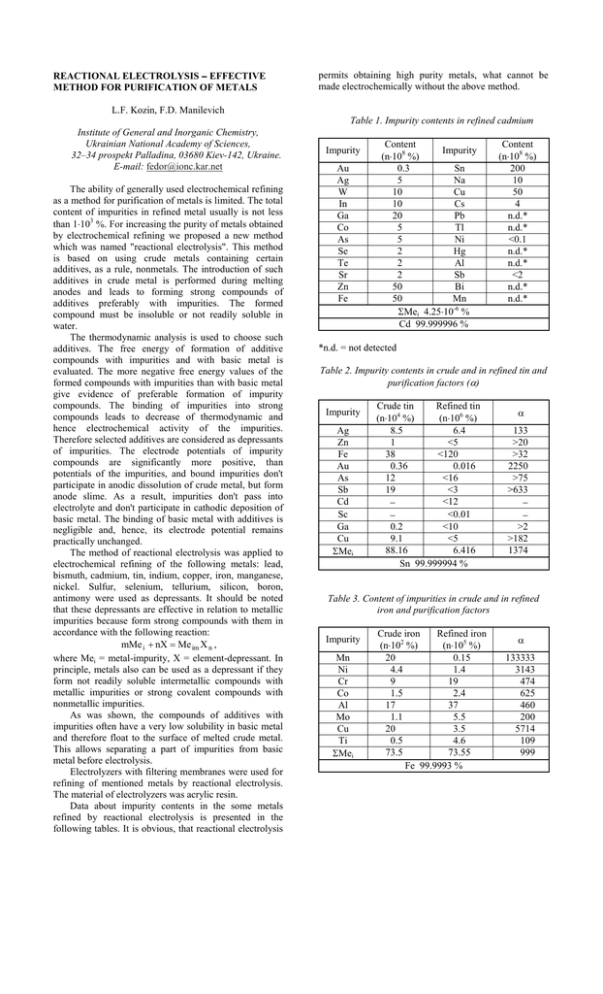
REACTIONAL ELECTROLYSIS − EFFECTIVE METHOD FOR PURIFICATION OF METALS permits obtaining high purity metals, what cannot be made electrochemically without the above method. L.F. Kozin, F.D. Manilevich Table 1. Impurity contents in refined cadmium Institute of General and Inorganic Chemistry, Ukrainian National Academy of Sciences, 32–34 prospekt Palladina, 03680 Kiev-142, Ukraine. E-mail: fedor@ionc.kar.net The ability of generally used electrochemical refining as a method for purification of metals is limited. The total content of impurities in refined metal usually is not less than 1⋅103 %. For increasing the purity of metals obtained by electrochemical refining we proposed a new method which was named "reactional electrolysis". This method is based on using crude metals containing certain additives, as a rule, nonmetals. The introduction of such additives in crude metal is performed during melting anodes and leads to forming strong compounds of additives preferably with impurities. The formed compound must be insoluble or not readily soluble in water. The thermodynamic analysis is used to choose such additives. The free energy of formation of additive compounds with impurities and with basic metal is evaluated. The more negative free energy values of the formed compounds with impurities than with basic metal give evidence of preferable formation of impurity compounds. The binding of impurities into strong compounds leads to decrease of thermodynamic and hence electrochemical activity of the impurities. Therefore selected additives are considered as depressants of impurities. The electrode potentials of impurity compounds are significantly more positive, than potentials of the impurities, and bound impurities don't participate in anodic dissolution of crude metal, but form anode slime. As a result, impurities don't pass into electrolyte and don't participate in cathodic deposition of basic metal. The binding of basic metal with additives is negligible and, hence, its electrode potential remains practically unchanged. The method of reactional electrolysis was applied to electrochemical refining of the following metals: lead, bismuth, cadmium, tin, indium, copper, iron, manganese, nickel. Sulfur, selenium, tellurium, silicon, boron, antimony were used as depressants. It should be noted that these depressants are effective in relation to metallic impurities because form strong compounds with them in accordance with the following reaction: mMe i + nX = Me im X n , where Mei = metal-impurity, X = element-depressant. In principle, metals also can be used as a depressant if they form not readily soluble intermetallic compounds with metallic impurities or strong covalent compounds with nonmetallic impurities. As was shown, the compounds of additives with impurities often have a very low solubility in basic metal and therefore float to the surface of melted crude metal. This allows separating a part of impurities from basic metal before electrolysis. Electrolyzers with filtering membranes were used for refining of mentioned metals by reactional electrolysis. The material of electrolyzers was acrylic resin. Data about impurity contents in the some metals refined by reactional electrolysis is presented in the following tables. It is obvious, that reactional electrolysis Impurity Au Ag W In Ga Co As Se Te Sr Zn Fe Content Impurity (n⋅108 %) 0.3 Sn 5 Na 10 Cu 10 Cs 20 Pb 5 Tl 5 Ni 2 Hg 2 Al 2 Sb 50 Bi 50 Mn ΣMei 4.25⋅10-6 % Cd 99.999996 % Content (n⋅108 %) 200 10 50 4 n.d.* n.d.* <0.1 n.d.* n.d.* <2 n.d.* n.d.* *n.d. = not detected Table 2. Impurity contents in crude and in refined tin and purification factors (α) Impurity Ag Zn Fe Au As Sb Cd Sc Ga Cu ΣMei Crude tin Refined tin (n⋅104 %) (n⋅106 %) 8.5 6.4 1 <5 38 <120 0.36 0.016 12 <16 19 <3 <12 − <0.01 − 0.2 <10 9.1 <5 88.16 6.416 Sn 99.999994 % α 133 >20 >32 2250 >75 >633 − − >2 >182 1374 Table 3. Content of impurities in crude and in refined iron and purification factors Impurity Mn Ni Cr Co Al Mo Cu Ti ΣMei Crude iron Refined iron (n⋅102 %) (n⋅105 %) 20 0.15 4.4 1.4 9 19 1.5 2.4 17 37 1.1 5.5 20 3.5 0.5 4.6 73.5 73.55 Fe 99.9993 % α 133333 3143 474 625 460 200 5714 109 999
